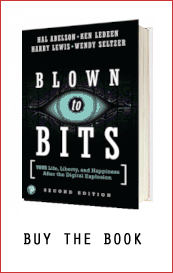Chapter 8: Bits in the Air‚ Old Metaphors, New Technologies, and Free Speech
Censoring the President … How Broadcasting Became Regulated … The Path to Spectrum Deregulation … What Does the Future Hold for Radio?
The FCC gained its authority over what is said on radio and TV broadcasts when there were fewer ways to distribute information. The public airways were scarce, went the theory, and the government had to make sure they were used in the public interest. As radio and television became universally accessible, a second rationale emerged for government regulation of broadcast speech. Because the broadcast media have a uniquely pervasive presence in the lives of all Americans, as the Supreme Court put it in 1978, the government had a special interest in protecting a defenseless public from objectionable radio and television content. The explosion in communications technologies has confused both rationales. In the digital era, there are far more ways for bits to reach the consumer, so broadcast radio and television are hardly unique in their pervasiveness. …
Federal legislation has been introduced to … extend FCC indecency regulations for broadcast media to satellite and cable television as well. … The explosion in communications raises another possibility, however. If almost anyone can now send information that many people can receive, perhaps the government’s interest in restricting transmissions should be less than what it once was, not greater. In the absence of scarcity, perhaps the government should have no more authority over what gets said on radio and TV than it does over what gets printed in newspapers. In that case, rather than expanding the FCC’s censorship authority, Congress should eliminate it entirely. …
Justice Frankfurter used an analogy that unintentionally pointed toward another way of thinking. Spectrum was inevitably scarce, he opined. Regulation of radio was therefore as vital to its development as traffic control was to the development of the automobile. … But everyone shares the roads. … The spectrum [too] can be shared rather than split up into pieces. … By far the most remarkable precedent for spread spectrum was a patented invention by Hollywood actress Hedy Lamarr‚ the most beautiful woman in the world, in the words of movie mogul Louis Mayer… . Whether Hedy Lamarr was more a Leif Erikson than a Christopher Columbus of this new conceptual territory, she was surely the most unlikely of its discoverers. In 1997, the Electronic Frontier Foundation honored her for her discovery; she welcomed the award by saying, It’s about time. …
Today, every Starbucks has WiFi‚ that is, wireless Internet access. Hotel rooms, college dormitories, and a great many households also have wireless. This happened because a tiny piece of the spectrum… was deregulated and released for experimental use by creative engineers. It is an example of how deregulation can stimulate industrial innovations, and about how existing spectrum owners prefer a regulatory climate that maintains their privileged position. It is a story that could be repeated elsewhere in the spectrum, if the government makes wise decisions.

